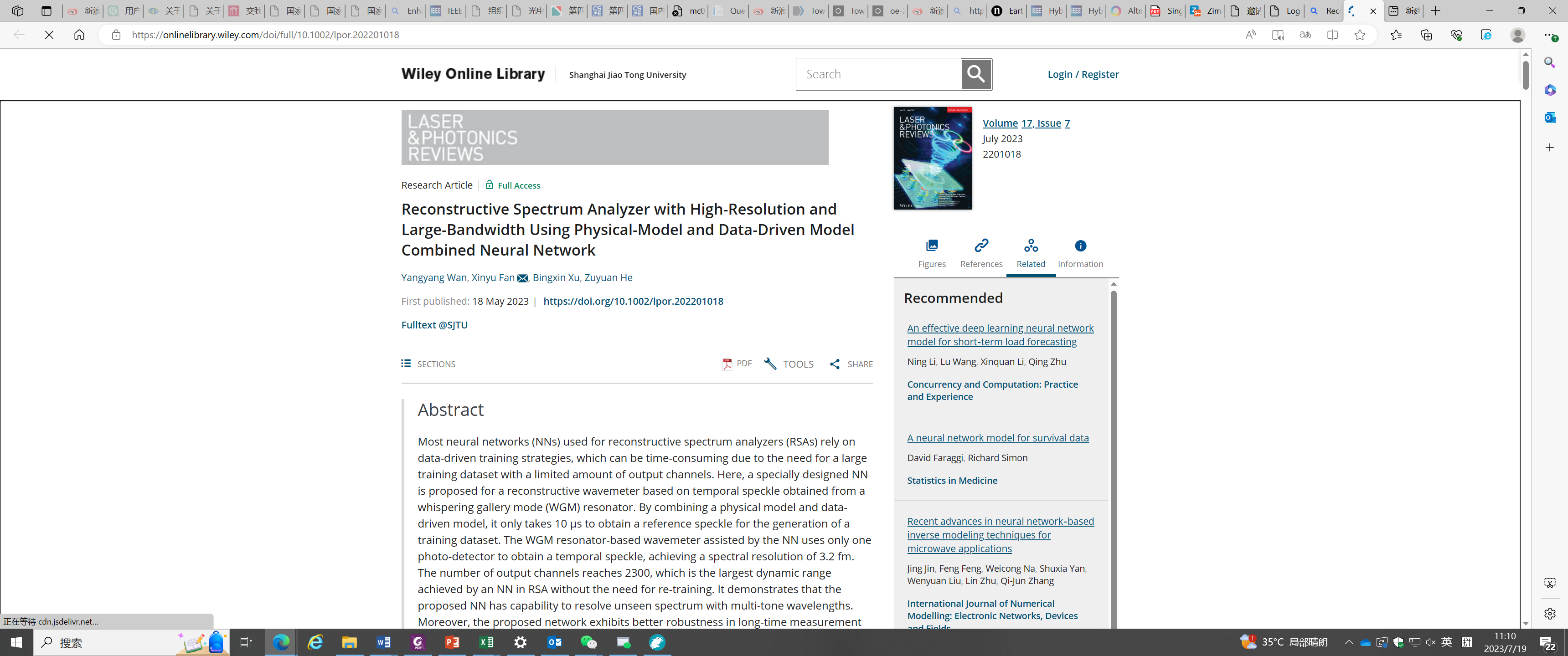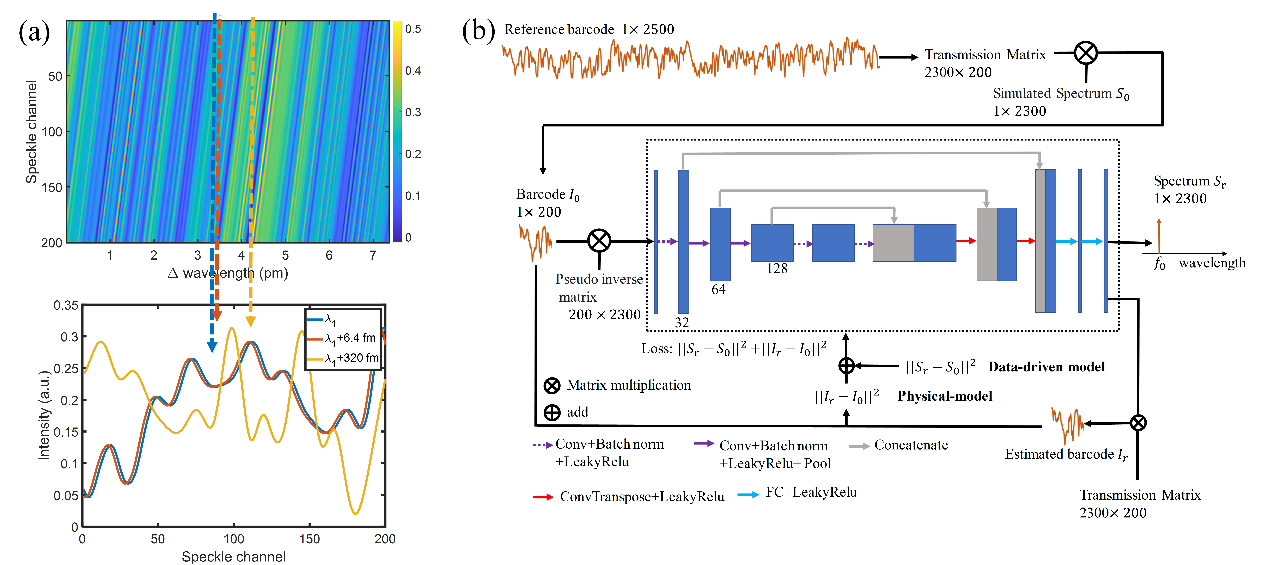- Home
- About Us
- Students
- Academics
-
Faculty
- Electrical Engineering
- Automation
- Computer Science & Engineering
- Electronic Engineering
- Instrument Science and Engineering
- Micro-Nano Electronics
- School of Software
- Academy of Information Technology and Electrical Engineering
- School of Cyber Security
- Electrical and Electronic Experimental Teaching Center
- Center for Advanced Electronic Materials and Devices
- Cooperative Medianet Innovation Center
- Alumni
-
Positions
-
Forum
News
- · Shanghai Jiao Tong University professors Lian Yong and Wang Guoxing's team have made remarkable progress in the field of high-efficiency pulse neural network accelerator chips.
- · AI + Urban Science research by AI Institute was selected as cover story in Nature Computational Science!
- · The first time in Asia! IPADS's Microkernel Operating System Research Wins the Best Paper Award at SOSP 2023
- · Delegation from the Institution of Engineering and Technology Visits the School of Electronic Information and Electrical Engineering for Journal Collaboration
- · Associate professor Liangjun Lu and research fellow Jiangbing Du from Shanghai Jiao Tong University made important advancements on large capacity and low power consumption data transmission
Progresses in reconstructive spectral measurement technique achieved by Shanghai Jiao Tong University
Recently, Professors Xinyu Fan and Zuyuan He from the Center for Intelligent Photonics (CIP) at the Department of Electronic Engineering, Shanghai Jiao Tong University, proposed a novel method using a training strategy for neural networks that combines physical models and data-driven models. This approach enables the realization of a high-resolution, large-bandwidth spectral reconstruction neural network using a small batch of training data, demonstrating excellent robustness in long-term measurements. The research findings were published in the renowned optical journal "Laser & Photonics Reviews" under the title "Reconstructive Spectrum Analyzer with High-Resolution and Large-Bandwidth Using Physical-Model and Data-Driven Model Combined Neural Network." Shanghai Jiao Tong University was the sole institution responsible for the study, with Dr. Wanyang Yang, a former Ph.D. student now working as a postdoctoral researcher, as the first author, and Professor Xinyu Fan as the corresponding author.

Background:
In recent years, computational spectral reconstruction instruments have garnered significant attention due to their advantages in miniaturization and high resolution. These instruments encode the spectral information of the light source into a speckle pattern and then utilize reconstruction algorithms to recover the original spectrum from the speckle pattern. However, the commonly used transmission matrix algorithms for spectral reconstruction face challenges in achieving both high resolution and large bandwidth due to ill-conditioned matrices and underdetermined problems. Although compressive sensing and principal component analysis can achieve large bandwidth and high-resolution spectral reconstruction, they suffer from slow computation due to repetitive iterations. Neural networks have shown considerable promise in spectral information reconstruction, particularly in high resolution and rapid reconstruction. Nevertheless, achieving large bandwidth spectral reconstruction remains a significant challenge for data-driven training strategies in spectral reconstruction neural networks. The primary obstacle lies in the enormous demand for training data and extensive training time when dealing with a large number of spectral output channels.
Innovative Methods:

Figure: Architecture and training data of PDNet. (a) System transmission matrix. (b) Proposed neural network structure and training process.
To address this challenge, Professors Xinyu Fan and Zuyuan He proposed a regression-based wavelength determination method using a physical-model and data-driven model combined neural network (PDNet) for a compact wavemeter with speckles of whispering gallery mode (WGM) resonator. The speckle, which consists of 200 channels, is measured using a single photodetector (PD) within 800 ns and is used as input to PDNet to determine a single wavelength with a resolution of 3.2 fm (or 400 kHz optical frequency). The number of output spectrum channels of PDNet can reach up to 2300. Additionally, it only takes 10 µs to obtain a reference speckle for generating the training dataset using the physical model of the WGM resonator-based wavemeter. By combining the physical model and data-driven model, PDNet can be trained with this quite small training dataset for solving a large output channel number, which was not possible with previous implementations. PDNet also demonstrates the ability to resolve unseen spectrum for multi-sparse wavelengths, and a long-term stability test shows its robustness. The work showed the potential of neural networks in achieving high-resolution and large-bandwidth spectral reconstruction without the need for time-consuming processes of large training data acquisitions.
Paper Information:
Authors: Wanyang Yang (Shanghai Jiao Tong University, Ph.D. student, currently a postdoctoral researcher at Shanghai Jiao Tong University), Bingxin Xu (Shanghai Jiao Tong University, Ph.D. student, currently a postdoctoral researcher at the Max Planck Institute in Germany), Xinyu Fan (Professor at Shanghai Jiao Tong University), Zuyuan He (Professor at Shanghai Jiao Tong University)
Journal Link:
https://onlinelibrary.wiley.com/doi/10.1002/lpor.202201018
Journal Information: "Laser & Photonics Reviews" is an internationally peer-reviewed optical journal dedicated to publishing high-quality review papers and research work in the field of optics. Its 2022 impact factor is 11.0.
-
Students
-
Faculty/Staff
-
Alumni
-
Vistors
-
Quick Links
